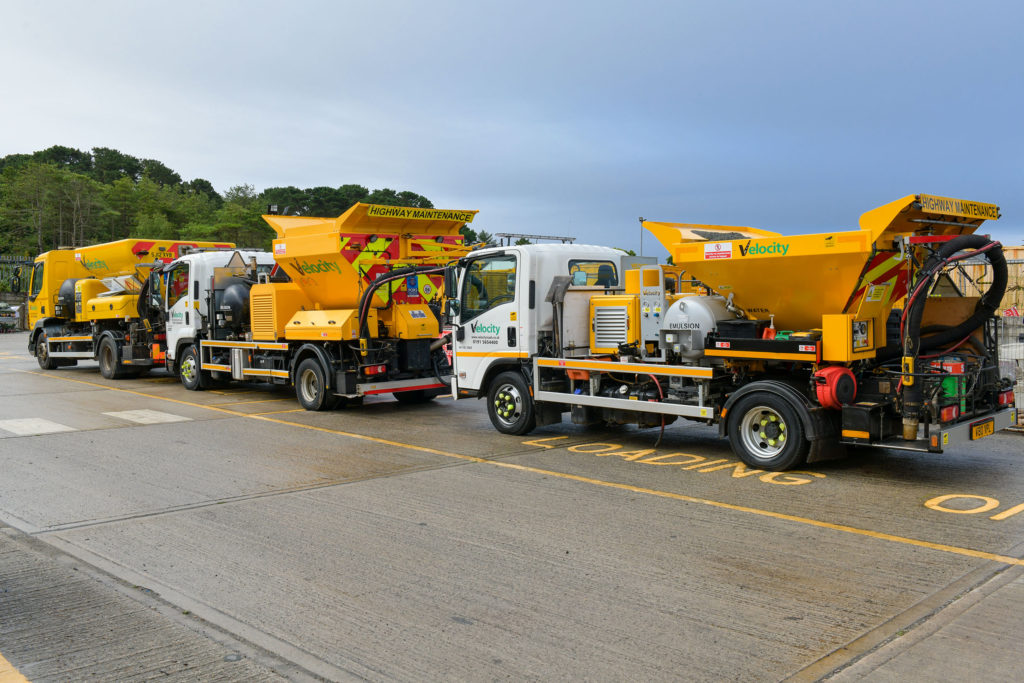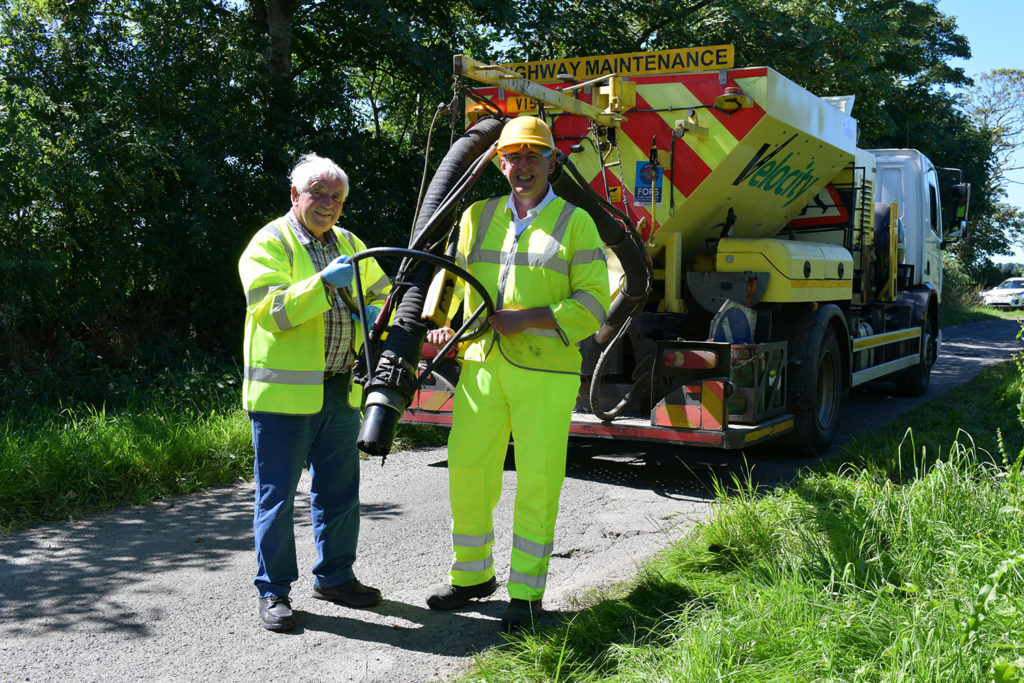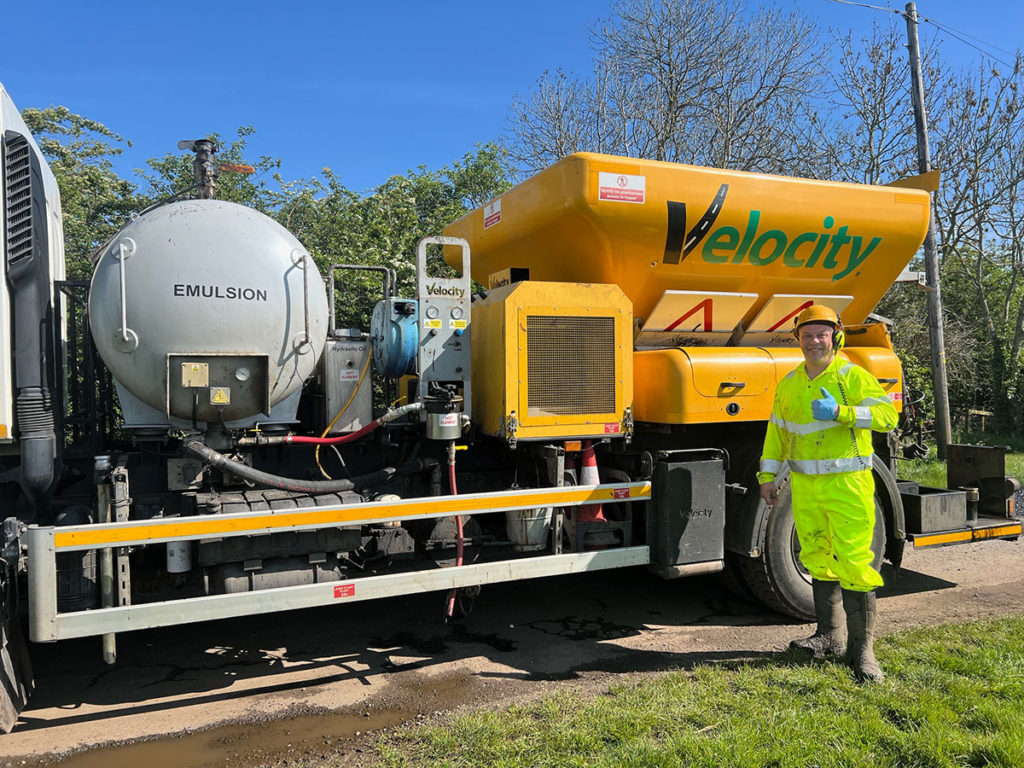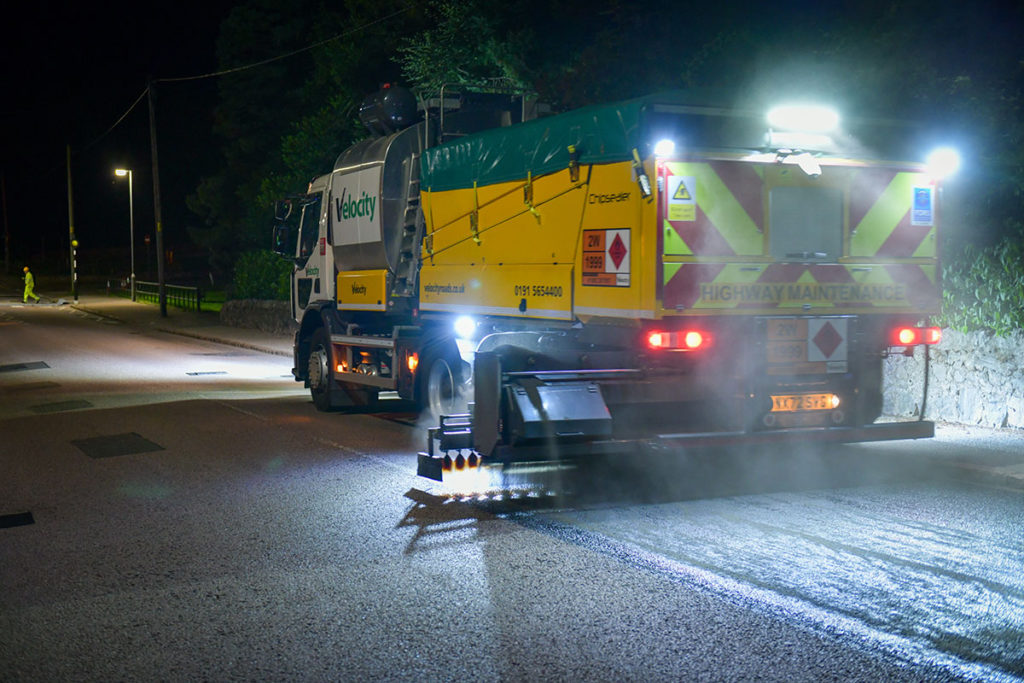This feature appeared in the July 2013 issue of Highways magazine.
Phill Lewis of road preservation experts Velocity reflects on how the UK’s authorities are increasingly changing priorities and opening up to new thinking in these times of austerity
There was a time, not so very long ago, when the challenge of the UK’s road network was a subject discussed almost exclusively within the industry. Now, however, it is all but impossible to flick through the pages of a national or local newspaper without your eyes falling on another article bemoaning the state of the nation’s roads.
Potholes are now headline news, as all too often are the increasing number of insurance claims against authorities, driven not only by the road repair reality but by the blame and claim culture in which we now exist. Dozens of websites encourage the public not only to report on and take images of the potholes they see but to make insurance claims too. With every pothole it seems that many see a pot of money.
And yet we cannot escape from the stark reality that our road network is in its worst state in living memory, a situation that sadly seems destined to worsen long before we turn the corner towards improvement.
The local network remains very much the poor relation when it comes to tackling this issue of great contention. Our local roads, including the many thousands of miles winding their way around the country’s housing estates, are increasingly neglected while national crisis reporting insists the focus remains on the A roads.
While I welcome the Government’s biggest programme of investment in UK roads for more than 40 years, it is frustrating that the £10 billion road repair commitment will not made be available until at least 2015-16. It is even more frustrating that the investment will be in major schemes that had been postponed following earlier budget cuts. While there is no doubt that our motorways must be preserved, the desperate need for action on our rural and local network seems to be have been conveniently forgotten.
Quite simply, our local roads are a mess, with previous surveys revealing an average of 19 potholes per housing estate across the country. And our minor roads will continue to suffer as the budgetary cuts bite ever harder.
The nation’s road users are the biggest losers, of course, but within the industry my sympathies lay with that ever-rarer species known as the lesser-common highway inspector. Dealing with the double-edged sword of ever-decreasing budgets and ever-increasing road defects can be a demoralising task. From the Highlands of Scotland to England’s home counties, my Velocity colleagues and I spend much time travelling up and down the country talking to them about the challenges they face, so I am well aware that those of them who remain have never had it so tough.
But the road network is this country’s biggest asset. As The Sun so succinctly and accurately put it in another recent crisis feature, our roads are the indispensable backbone of Britain. So it is vital that everything possible is done to maintain them and ensure they do not continue to deteriorate at the same alarming rate.
I have no magic wand to offer my highway friends, otherwise I’d have long since waved it to produce a flash of cash to bring our network back up to scratch. I do, however, believe there’s plenty for them to be positive about.
Now is the time to break from convention of old-style repair gangs and start afresh. And the good news is that the new brigade left holding the fort within our authorities are open-minded to innovations offered by companies such as Velocity in the fight to find the best possible road preservation solutions.
Five years ago patching machines were rarely seen on urban roads. Firms like Velocity were more likely to be sent to deal with the rural network. But times have changed.
While quality is the watchword, speed is of the essence. When road use is constant, in areas of high-tourism for instance, it can be a problem to close a road for a significant length of time. Where repairs by conventional methods would often mean closing sections of road for up to half a day, Velocity patching can be done in a fraction of the time. In terms of public perception, the benefits cannot be over-emphasised of having a road back and ready to take vehicles of up to 44 tonnes within 15 minutes of closure.
Overwhelmed by a backlog of defects, it is understandable, therefore, that many London boroughs, with their constantly bustling roads, are increasingly seeking more efficient ways of looking after their local network.
Utilising highly-skilled teams and machines that double as mobile mixing units to carry out a repair in a matter of minutes minimises traffic disruptions, while the carbon savings compared to conventional methods are immense, so the environment is a winner too.
Velocity’s patching’s own public perception has also changed beyond recognition in recent years. High-quality operator training, together with better quality aggregates and emulsions making for denser, more sustainable and longer lasting repairs means there is now great faith in the industry.
Once viewed through suspicious eyes as a bold alternative to conventional methods, companies like Velocity are now increasingly seen as a key component for cash-strapped councils and highway authorities in need of good value for money and a long-lasting, high quality solution to potholes and other defects.
The first 28 weeks of 2013 saw Velocity repair nearly 175,000 potholes, almost 100% up on the same time last year. We have had 18 crews and a fully-committed support team working flat out on contracts across Cheshire, Kent, Essex, Herefordshire, Hampshire and Hertfordshire, with many other authorities now in talks to follow suit.
So Velocity patching and the wide range of road preservation solutions such as surface dressing and micro-surfacing are here to stay, though I would always recommend taking secondary advice from the invaluable tool that is the RSTA website to check when and where to use the myriad of surface treatment options and what to expect in terms of lifespan and performance.
There is no getting away from the massive challenge that lies ahead. But I am cheered by the way in which so many of those in positions of responsibility are ready to pick up the gauntlet and take up the fight by using whatever innovation or method is needed. It’s time to break with convention. Out with the old and in with the new!









